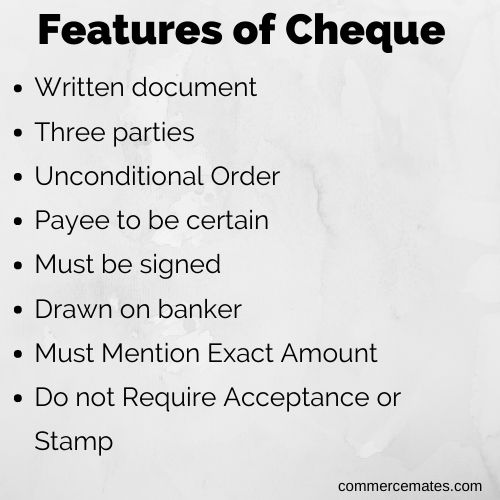Contents
What is Cheque
Cheque is a financial instrument containing an unconditional order to pay the amount specified in the instrument from drawer’s account to another person in whose name cheque is issued. The cheque is signed by drawer ordering his bank where his transaction banking account is maintained to transfer the specified amount to Payee. The drawer also writes various details on cheque like amount to be paid, date and Payee name.
There are three main parties in the transaction of cheque: Drawer, Drawee and Payee. Drawer is the person who writes and issues the cheque. He is the customer and account holder of the bank. Drawee is the bank in which drawer holds and on which he draws his cheque. It is the bank which is ordered to pay the amount mentioned in the cheque. Payee is the person in whose name the cheque is issued. He is the beneficiary of cheque and bank is required to pay the amount to him.
Every cheque consists of three important numbers that are cheque number, IFSC code and MICR. MICR is generally a 9 digit code, first, three digits denote city, next three denotes bank and last three tells the branch code. Cheques are one of the common and most widely used means of payments used these days. It makes the payment process secure and riskless as involvement of physical currency is removed by using cheques.
Features and Characteristics of Cheque

Written document
A cheque is a Written document. It can be written in any form or language but the word should be visible. Cheque can be written in pen, pencil, typed or printed. To be in written is a must requirement for a document to be termed as cheque. Oral orders to pay the amount cannot be considered as cheque.
Three parties
There are three parties involved in cheque. These are Drawer, Drawee and Payee. Drawer is the person who makes and issues the cheque. Drawee is the bank of drawer on whom the cheque is drawn or who is ordered to pay the specified amount. Payee is the person who is the beneficiary of cheque or to whom the amount is to be paid by Drawee on Drawer order.
Unconditional Order
Cheque contains an unconditional order from a customer to his bank to pay the amount. Payment shall not be dependent on any contingency or any condition should not be attached with it. It is required to be paid unconditionally by the drawer to the payee. Cheque containing conditions for payment is invalid and cannot be termed as Cheque.
Payee to be certain
The cheque must clearly denote the name of the beneficiary, to whom it must be paid. Name of Payee must be clearly written and should be on a cheque. Payee can be a real person or an artificial person like a company.
Must be signed
Cheque must be signed by his maker. Original drawer should sign the cheque and should clearly mention the date on it. A cheque stands invalid unless it is signed by its original drawer or if signed by any other person other than his drawer.
Drawn on banker
A cheque is drawn by the drawer on a specified bank. Customer holding account in a bank that may be a saving or current account draws a cheque on its bank. Cheque drawn on any other person is termed as invalid.
Must Mention Exact Amount
The amount to be paid by Drawee must be clearly mentioned in Cheque. It contains an order to pay a monetary amount only. The amount of money should be clearly written in figures and words.
Do not Require Acceptance or Stamp
Cheque does not require any acceptance on part of drawee like a bill of exchange. It contains an unconditional order to pay. However, banks have a provision to mark cheque as “Good” for the purpose of clearance but it has nothing to do with acceptance.